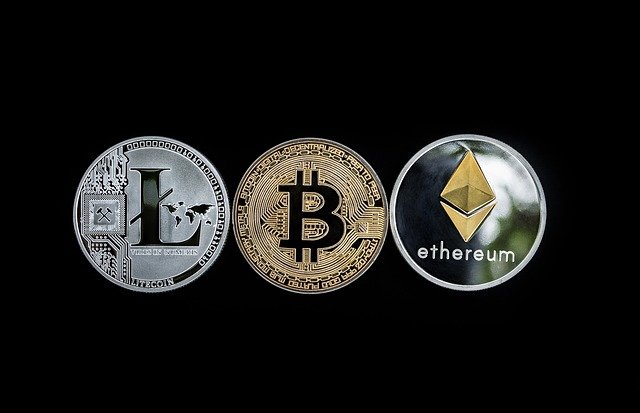Here’s a prediction made just three years ago, “Here’s a prediction. ETH — the asset, not the Ethereum Network itself — will go to zero.” This was said about the cryptocurrency that is the base of numerous new platforms, services, and concepts that would not have existed today if it wasn’t for the smart contract platforms like Ethereum.
From DeFi to yield farming, from oracles to synthetic assets over blockchain, none of these tools would have been possible if it weren’t for an ethereum contract that is programmed into code for automatic execution when certain conditions are met.
With the move away from Proof of Work (PoW) to Proof of Stake (PoS) consensus algorithm, Ethereum is set to overtake Bitcoin. Let’s get you up to speed on what is Ethereum and the Smart Contract.
Table of Contents
What is Ethereum?
Ethereum network is an open-sourced public network that uses blockchain technology to program and deploy smart contracts. It has its own cryptocurrency called ETH that is the main engine that runs and pays for the ecosystem’s operation. Alongside the smart contracts, it facilitates cryptocurrency trading securely without a third party involved.
As the Bitcoin network, its operations and programming are transaction-focused. However, unlike Bitcoin, Ethereum is programmable. Ethereum network allows you to create two types of accounts. Externally owned and maintained by human users, funds controlled by private keys, and programmable smart contract accounts.
Ethereum network as a programmable decentralized network facilitates developers to deploy all kinds of apps. Despite having the smart contract, Bitcoin remains the most popular cryptocurrency, but with Ethereum’s aggressive growth, many speculate it will soon overtake Bitcoin in the number of users and transactions.
How Do Smart Contracts Work?
Smart contracts were introduced as Blockchain 2.0, a next step in developing blockchains that signaled its growth from being just a financial transaction protocol to an all-purpose programmable utility. Essentially, they are pieces of code, and not contracts in the legal sense, that empowered blockchain’s reach from a simple recordkeeper of financial transactions to a tool for automatically implementing terms of multiparty agreements.
The programmed smart contracts are executed by the Ethereum network that utilizes a consensus algorithm called Proof of Work (PoW) to agree upon the sequence of actions resulting from the smart contract’s code, events decided upon by the parties involved. The output provides a trustless mechanism by which parties can agree on terms and trust that they will be executed automatically upon conditions met.
A wide variety of applications have come to the fore for blockchain-based smart contracts. Anything from validating loan eligibility all the way to executing transfer pricing agreements between subsidiaries can now be executed automatically.
It is important to note that before blockchain, especially Ethereum, executing this type of smart contract was impossible between parties. Primarily because each party to an agreement like this would insist on maintaining separate databases of their own. With a decentralized, but shared database running on a blockchain protocol, the smart contracts allow contracts to auto-execute. A consensus mechanism enables all parties to validate the outcome instantaneously and without the need for a third-party intermediary.
The Future of Smart Contracts
Smart contracts are sophisticated enough to have potential applications and use cases that go beyond the simple transfer of assets. They can be utilized to execute deals in a wide array of circumstances, from legal processes to insurance contracts to crowdfunding agreements to derivative contracts.
The trustless nature of Smart contracts renders them useful for many processes and has an excellent potential to eliminate intermediaries in the legal and financial fields. Simplifying and automating such routine and repetitive processes cost people a pretty penny in sizable banks and legal fees.
A recent story about the international bank JP Morgan saving millions of dollars in legal fees by using AI technology can also be applied to smart contracts and their utility in contract compliance.
The role of legal experts could also be radically altered if not eliminated in the future as smart contracts more sophisticated capabilities such as adjudications of traditional legal contracts and customizable smart contract templates. What is more, smart contracts have the ability not only to automate processes but also to control behaviors. They can be utilized very efficiently for real-time auditing and risk assessments for the benefit of compliance.
Smart contracts can also be an ideal application for running IoT and edge computing devices. An example will be collecting a small fee for using the internet service in a bar or a restaurant or for a utility company to offer a service that executes a smart contract when changes in power rates occur—shutting off or slowing down devices to reduce or increase power consumption.
A smart contract can unlock funds for a supply chain application once an order has been delivered to its destination. IoT sensors can ensure that it has remained untouched and the contents have been kept at the optimal temperature with appropriate humidity levels. The cargo has not been damaged during the journey.
There are thousands of such applications, from assuring the provenance and ownership of a high-priced piece of art or jewelry to certifying that a property is solely owned by the entity selling it and is free of any liens against it.
In conclusion, smart contracts have brought a way for us to automate several processes where intermediaries are currently required and cost thousands of dollars.


